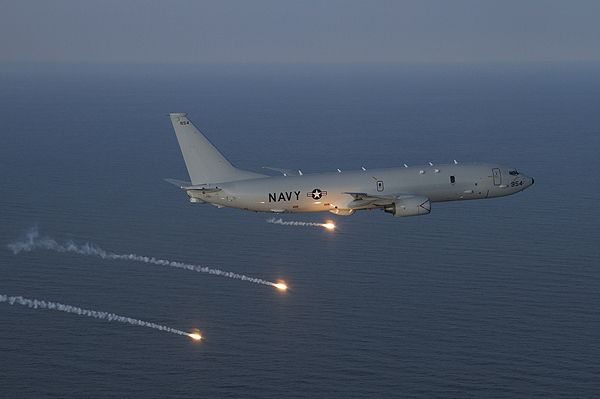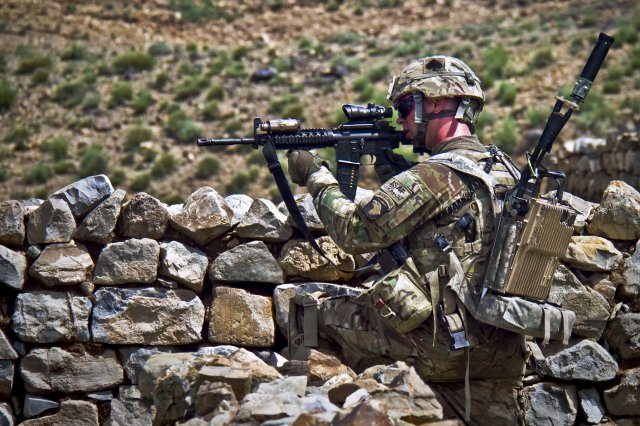The Maritime Patrol and Reconnaissance Force (MPRF) is transitioning into a new type/model/series (TMS) for the first time in 50 years.
To make this transition a success, the Naval Aviation Enterprise (NAE) and industry leaders are working to sustain the legacy P-3C and EP-3E while the P-8A TMS is being introduced to the fleet.
The last time the MPRF Community transitioned to a new TMS was in 1962 with the delivery of the first P-3A to Patrol Squadron (VP) 8. As in the past, the key to a successful transition is constant communication and cooperation across all levels of the NAE and industry. The following highlights are evidence of the success of these efforts.
The fleet transition to the P-8A Poseidon is progressing well and on schedule. In Jacksonville, Fla., the Fleet Replacement Squadron, VP-30, MPRF Weapons School and P-8A Fleet Introduction Team have been busy facilitating the transition of the first three fleet squadrons from P-3C to P-8A. VP-16 achieved Safe for Flight (SFF) in January 2013 and is progressing through the Inter-Deployment Readiness Cycle (IDRC) in preparation for the first P-8A deployment in December. VP-5 achieved SFF and began their IDRC in the beginning of August, and VP-45 just started transition upon returning from their last P-3 deployment in June.
Over the last year, Air Test and Evaluation Squadron 1 successfully completed P-8A
Initial Operational Test and Evaluation supported by multiple detachments, exercises and real-world operations. As expected, the aircraft (based on the Boeing 737) has been extremely reliable. The mission systems have performed well and the aircrews are rapidly becoming more adept at flying and employing the aircraft while the maintenance team is developing the skills required to repair and maintain this modern aircraft.
The supply chain is expanding to meet the demands of a new aircraft and the community is constantly learning to ensure that the P-8A is poised for success when it deploys this winter. While there have been many challenges as the P-8A executes test and fleet introduction simultaneously, the P-8A program continues to be a model of effective planning and execution. The airframe and mission systems are a significant technological leap forward and provide commanders with a reliable platform hosting advanced technology sensors.
Legacy Platforms
As the P-3C and EP-3E continue their trek toward the end of their life cycle, many challenges need to be overcome, including parts obsolescence, increased levels of support for legacy components, and a shortage of flight line assets. In 2007, MPRF “red stripe” events, which grounded aircraft due to “fatigue tracking metrics beyond acceptable limits,” left the community with 49 mission aircraft to support the high operational demand across the globe and at home.
More than 50 percent of the P-3 fleet was out of reporting (OOR) due to the red stripe. Massive sustainment efforts have been made and we are beginning to see a real return on our investment as aircraft are returned to service. In FY14, we plan on reducing the amount of our P-3C inventory OOR for depot-level sustainment events and technological modifications by more than 10 percent, and we plan to reach P-3’s required number of Primary Aircraft Assigned by the end of FY15. We expect to have sufficient ready-for-tasking assets to meet deployment and training requirements until platform sundown, but P-8A delivery must proceed as planned to ensure there is no gap in coverage for Global Force Management.
Our cost savings efforts have been effective and multiple cost reduction initiatives have allowed the aging force to operate efficiently and effectively. Recently, initiatives to improve Engine Driven Compressor maintenance and place our APS-137 Receiver Exciter Processor and Transmitter under a Performance Based Logistics contract with Raytheon have helped reduce cost by 11 percent. With more than 50 years of faithful and dedicated service complete, the mighty P-3C Orion is prepared to finish its service to the Navy at full speed.
Manpower
One of the most complicated pieces of the MPRF transition is manpower. When the transition is completed, the MPRF community will consist of the P-8A Poseidon teamed with the MQ-4C Triton unmanned aircraft system. The P-8A/MQ-4C combination will be responsible for all the missions currently covered by VP, Fleet Air Reconnaissance Squadrons (VQ), and Patrol Squadron Special Projects Unit (VPU) today. The MPRF transition is a unique manpower story and a challenge – the P-3C is being replaced by two new TMSs – but all manpower is being sourced from within the legacy community. The restructuring has already begun with the consolidation of the VQ and VPU last year, and the continued transition of P-8A squadrons in Jacksonville. Unmanned Patrol Squadron 19, the first MQ-4C squadron, is currently scheduled to begin its standup with an officer-in-charge in late FY14.
Conclusion
The MPRF Community has almost fully recovered from the 2007 red stripe and is quickly transitioning to the new P-8A. The successful turnaround since 2007 can be directly attributed to the NAE and industry leaders working towards a common goal of recovery and eventual transition to the next generation of maritime patrol aircraft, both manned and unmanned.











